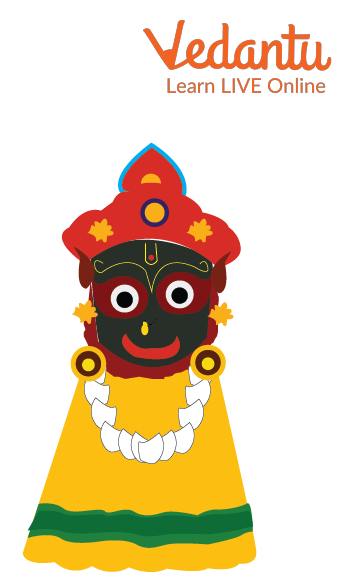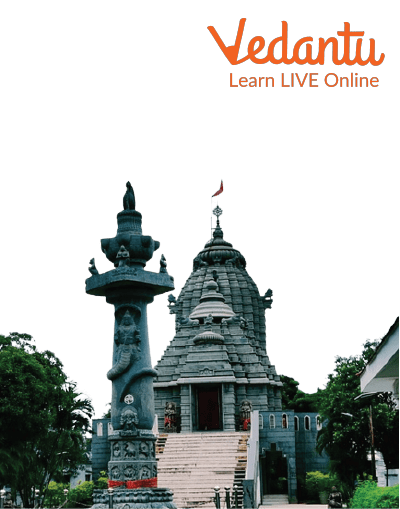Jagganath

Confusion surrounds the history and development of Jagannath worship. The hymn 10.155.3 of the Rigveda is interpreted by some scholars as having a possible origin. Still, others conflict with this and claim that the deity has tribal roots and is a syncretic/synthetic creation. The derogatory portrayal of the god that Christian missionaries made in the 18th and 19th centuries are where the English word "juggernaut" originates. The following are the takeaway points from this topic:
Story of Jagganath
Secret of Jagannath Temple
Introduction of Lord Jagannath Story
Lord Jagannath is regarded as being non-sectarian. In the Indian states of Odisha, Chhattisgarh, West Bengal, Jharkhand, Bihar, Gujarat, Assam, Manipur, and Tripura, he is a significant regional figure. He is also important to Bangladesh's Hindu population. Particularly significant to Vaishnavism and one of India's Char Dham pilgrimage sites is the Jagannath temple in Puri, Odisha. One of the best examples of Kalinga architecture—specifically, Odisha art and architecture—that has survived is the enormous Jagannath temple, which is over 61 metres (200 feet) high and built in the Nagara Hindu temple style. Since around 800 CE, it has been a significant Hindu pilgrimage site.
Story of Jagganath
Along with his sister, Subhadra, and brother, Balabhadra, the Hindu deity Jagannath is worshipped in triad form in India and Bangladesh. Within Odia Hinduism, Jagannath is the Para Brahman, Purushottama, and the supreme god. Most Vaishnava Hindus, especially Krishnaites, view Jagannath as an abstract representation of Krishna or Vishnu, who occasionally appears as one of these deities' avatars. He is considered a fierce tantric form of Bhairava, a manifestation of Shiva associated with annihilation, by some Shaiva and Shakta Hindus.
The idol of Jagannath is a carved and embellished wooden stump with prominently absent hands or legs, large round eyes, and a symmetrical face. Jagannath's worship practises, sacraments, and rituals are syncretic and incorporate uncommon rites in Hinduism. Unusually, the icon is made of wood and is periodically replaced with a fresh one.

Jagannath
Secret of Jagannath Temple
It has been observed that the flag flying over the top of the temple's dome always moves against the current of air. This nature-defying fact has no scientific explanation.
The enormous chakra, which towers over 20 feet above the temple, was put in place long ago. According to legend, it can be seen from every angle of the city, and the Chakra appears to be gazing back at it. This is a puzzle in architecture that has yet to be able to solve.
When we go to the seaside, the sound of the waves crashing on the shore is the first thing our senses notice. The sea waves, in the case of Jagannath Temple, seem to stop as soon as one enters the grounds through the Singha Dwara entrance. The sound of the waves is completely absent. The waves are audible the moment one exits the temple. Once more, there is no scientific justification for this puzzling fact.

Jagannath Temple
Conclusion
Within Odia Hinduism, Jagannath is the Para Brahman, Purushottama, and the supreme god. Most Vaishnava Hindus, especially Krishnaites, view Jagannath as an abstract representation of Krishna or Vishnu, who occasionally appears as one of these deities' avatars.


FAQs on Jagganath
1. Which very famous festival in India is associated with Lord Jagganath?
Jagannath is respected during the Ratha yatra, an annual festival in eastern Indian states every June or July. His image is ceremoniously taken down from the sacrosanctum (Garbhagriha) of his primary temple in Puri and the other two associated gods and goddesses.
2. What is Inside Lord Jagganath?
The fascinating Buddhist claim relates to a mysterious substance known as "Brahma" that is believed to be located inside the navel of the primary idol, Jagannath. Buddhists claim that this Brahma is a tooth throwback that was transported from Kushi Nagar, where the Buddha passed away, to Puri, contrary to Hindu claims that it is the original blue stone.
3. What is Lord Jagannath's origin story?
The life of Lord Jagannatha is a tale of devotion and the unending love between God and man. It describes how a devotee's prayers led to the Lord appearing wondrously. Additionally, it demonstrates how Krisna became the Deity Jagannatha to accept devoted service from all classes of men.
Confusion surrounds the history and development of Jagannath worship. The hymn 10.155.3 of the Rigveda is interpreted by some scholars as having a possible origin. Still, others conflict with this and claim that the deity has tribal roots and is a syncretic/synthetic creation. The derogatory portrayal of the god that Christian missionaries made in the 18th and 19th centuries are where the English word "juggernaut" originates. The following are the takeaway points from this topic:
Story of Jagganath
Secret of Jagannath Temple




